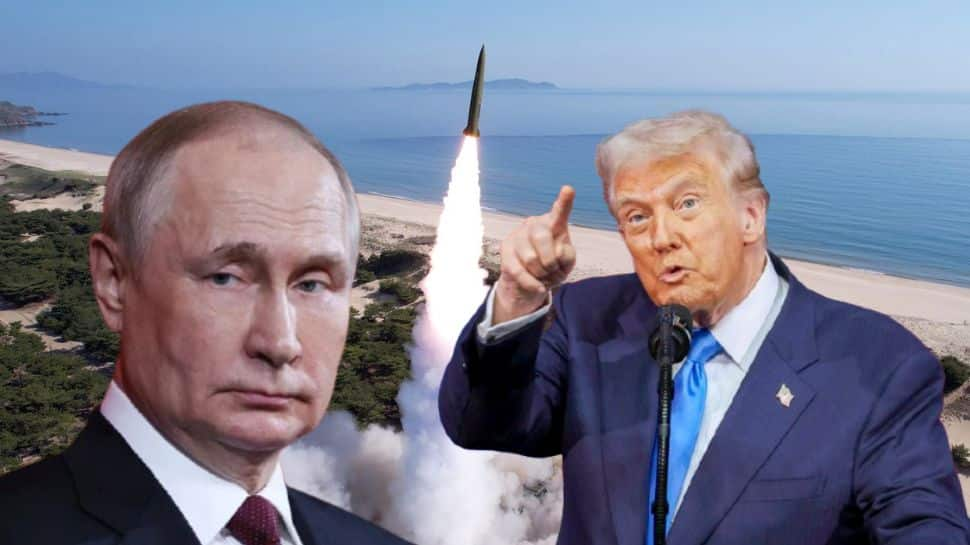In a striking development that has sent shockwaves through the global security landscape, the United States, under President Donald Trump’s directive, has announced the immediate resumption of nuclear weapons testing, effectively ending a more than 30-year moratorium. This decisive move comes in direct response to recent advancements by Russia in the realm of nuclear weaponry, notably their successful tests of two groundbreaking nuclear-powered super-weapons: the Poseidon nuclear torpedo and the Burevestnik cruise missile. These weapons have been designed to circumvent existing American missile defense systems, posing a significant strategic challenge to U.S. national security.
The timing of the announcement is particularly notable. Just days before President Trump’s declaration, Russia demonstrated these advanced weapons, both of which represent a new class of nuclear capabilities. The Poseidon is a nuclear-powered torpedo capable of remaining hidden underwater for extended periods—potentially months—while carrying a devastating nuclear payload. This offers Russia the ability to strike with little warning and evade detection by conventional means. The Burevestnik, on the other hand, is a nuclear-powered cruise missile with virtually unlimited range and the ability to maneuver unpredictably, making it extremely difficult to intercept or defend against. These developments have been widely interpreted as Russia’s deliberate challenge to U.S. military dominance and strategic deterrence.
President Trump’s response was unequivocal. In his announcement, he acknowledged that other countries’ testing programs—an implicit reference to Russia’s recent activities—have eroded the United States’ longstanding nuclear advantage. He emphasized that America currently holds the top position in the global nuclear hierarchy, with Russia second and China trailing in third. However, Trump sounded a clear alarm about China’s rapid military modernization, warning that within five years, China could reach nuclear parity with Russia. This, coupled with Russia’s introduction of novel nuclear technologies, signals a shifting balance of power that threatens to undermine U.S. strategic superiority.
The president’s directive to the Department of Defense was explicit: the United States must resume nuclear weapons testing “on an equal basis” with other nuclear powers. This is not a measured or symbolic gesture but a commitment to matching Russia’s advancements test for test, weapon for weapon. The timeline for this renewed testing regime is immediate, underscoring the urgency with which the administration views this threat.
This policy shift marks a significant turning point in international arms control. The moratorium on nuclear testing, which the U.S. has observed since the late 1980s, was a cornerstone of global efforts to reduce nuclear proliferation and promote strategic stability. Its suspension signals a reversion to Cold War-era dynamics, where nuclear competition and arms races dominated global security concerns. Many experts had believed that the nuclear arms race had effectively ended with the Cold War’s conclusion, but Russia’s recent weapons demonstrations and the U.S. response have reignited these tensions.
The Poseidon and Burevestnik weapons are not just technological achievements; they represent strategic challenges that render existing U.S. missile defense systems potentially obsolete. The Poseidon’s ability to lurk undetected underwater for extended durations before delivering a catastrophic strike introduces a new dimension of threat that is difficult to counter. Similarly, the Burevestnik’s nuclear-powered engine grants it unprecedented range and maneuverability, enabling it to evade missile defenses that rely on predictable flight paths.
Trump’s announcement also highlights broader geopolitical concerns involving China. The president’s remarks about China’s rising nuclear capabilities serve as a reminder that the U.S. faces a multipolar nuclear environment, not just a bilateral rivalry with Russia. China’s rapid military advancements, including developments in stealth fighter jets and other advanced weaponry, compound the strategic challenges confronting the United States.
In essence, the U.S. is signaling that it will not fall behind in this evolving arms competition. The immediate resumption of nuclear testing aims to restore and maintain America’s deterrent capabilities in the face of emerging threats. It sends a clear message to adversaries that the United States remains committed to defending its interests and preserving its strategic edge, even if that means reversing decades of nuclear test bans.
This announcement has significant implications for global security and arms control frameworks. It raises concerns about a potential new arms race, with increased risks of escalation and proliferation. The breakdown of longstanding agreements and norms that have helped contain nuclear competition could lead to heightened tensions and instability. Allies and adversaries alike will closely monitor how this policy unfolds and what it means for future negotiations on arms control and disarmament.
In conclusion, the

